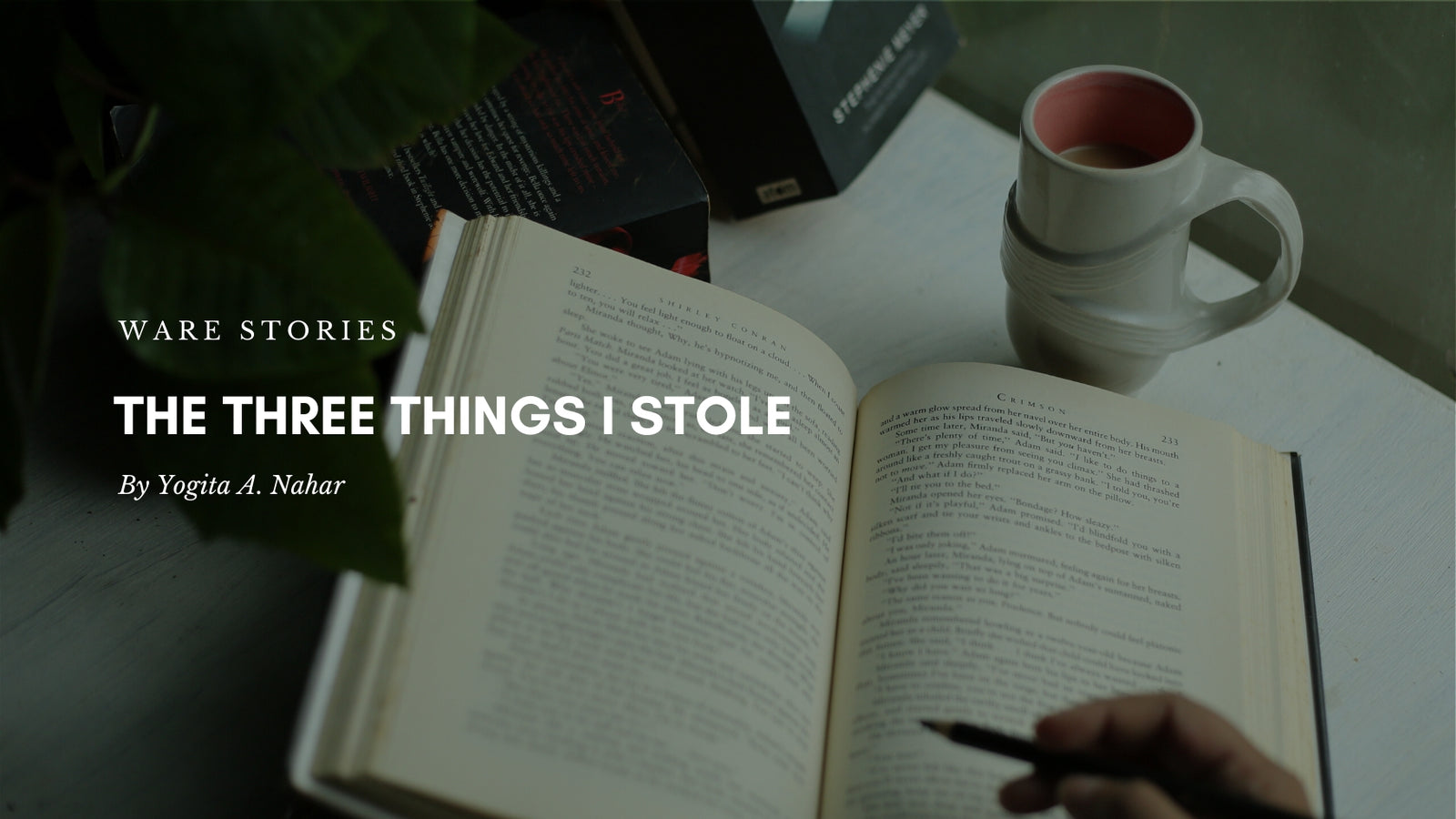THE THREE THINGS I STOLE

The human brain is constantly stealing information. Constantly influenced by the things we see, learn and experience. The things we like leave a subtle imprint on our minds. Unconsciously, the work we create ends up being a mix of these influences.
My first blog article is inspired by Austin Kleon’s book “Steal Like an Artist”. I’m a big believer in authenticity and I bought this book because I was taken aback by the title.
The book opens with a big, bold and slightly depressing thought that “NOTHING IS ORIGINAL”, and quotes the Bible “there is nothing new under the sun”.
Then it throws a ray of hope your way:
“Everything that needs to be said has already been said. But since no one was listening, everything must be said again.” - Andre Gide
I realized that if we free ourselves from the struggle of trying to create something from nothing and stressing about how to be perfectly original, we may just be able to embrace influence in the right way, and end up learning how to steal correctly.
Reading the book made me look back at everything I’ve ever designed from a whole new perspective. I sat down to think, where did my mind steal from when I started Ware Innovations?
Here's what we do at WI:
At Ware Innovations, we explore different materials in a super hands on way, to create functional and beautiful products that add a moment of delight to the user’s everyday life. We make it a point to use materials that are not only good for our users but also good for the earth.
And here’s my list of the ideologies I think I unknowingly stole from some of my heroes when I started Ware Innovations:
1. The idea of ‘hedonistic sustainability’ from Bjarke Ingels.
I remember watching Bjarke’s Ted talk on “hedonistic sustainability” and being absolutely mind blown by it! The idea focuses on using sustainability for its beauty, and its ability to add value to people’s life through architecture. Traditionally people tend to think of sustainability as boring and treat it like a sacrifice, but at BIG (Bjarke Ingels’ architecture firm) they use sustainability to add a playful twist to their projects!
Take their project 'CopenHill' for instance - Copenhagen receives a lot of snow, but the city is flat and has no ski slopes. However, they do have mountains of trash. So BIG proposed to turn the trash into energy for power-generation, and to turn the power-plant into a ski-slope so that kids would be excited to go see and learn about it!


2. “The aha moment” from Nendo (a Japanese Design Firm)
For me, Nendo is like the God of product design conceptualization. The founder, Oki Sato’s vision is clear: Giving people a small "!" moment.
The word 'Nendo' means 'play-dough'. The design firm treats everyday observations like play-dough and reshapes them into ideas that are easy to understand (genius). And in the process they create intriguingly simple yet delightful products!
Nendo’s website (which actually runs you through their design process through minimal illustrations) is the perfect way to refuel your design brain by looking at the simple things that inspire these guys to create beautiful products.

An illustration explaining the concept behind the "Suntan Pattern" project
Suntan Leather Patterns - Leather is known to age beautifully over time. Playing on this fact, Nendo applied tanning oils and sunblocks to the leather, such that when you buy the product it is plain, however exposure to sun reveals the hidden patterns.

See how the "Suntan Pattern" reveals itself over time, from right to left.
3. A balance between hand building and digital modeling - from Matthias Pliessnig an acclaimed furniture designer.
Matthias makes the most stunning, bent wood bent benches. His benches are essentially like sculpture, except that you can touch them, go sit on them/lie down on them. As part of his process he creates curved profiles and forms on the computer, print them out in actual scale, and edit them as he uses them for a starting point to make his benches!

A sneak peak into his process: Matthias Pliessnig Process Video
I stole 2 things from him, the idea of creating a balance between digital modeling and hand building, and the idea of making sculptural pieces that are also functional. At Ware, we always use a mix of hand-building methods and digital techniques (like 3D-printing, laser-cutting and CNC cutting) to make our designs. But we always start analog, go digital (if need be), and finish by adding details by hand.

To sum it up, here’s why I decided to write this as our first article. Even as we socially distance ourselves physically, we are fortunate enough to live in an insanely connected digital world, where we can choose our influences. In this moment we have the ability to surround ourselves with the most incredible people, the most inspiring work and an abundance of knowledge, now the question is whose minds will you steal from?
“We want you to take from us. We want you, at first, to steal from us, because you can’t steal. You will take what we give you and you will put it in your voice. And that is how you begin. And then one day someone will steal from you” - Francis Ford Coppola




Beautifully expressed Yogs… Love the use of the word ‘steal’ as against the puritanical ‘inspire’… Also very insightful…
Leave a comment